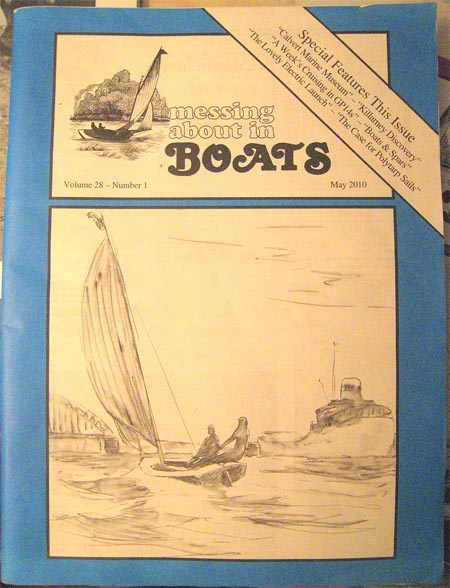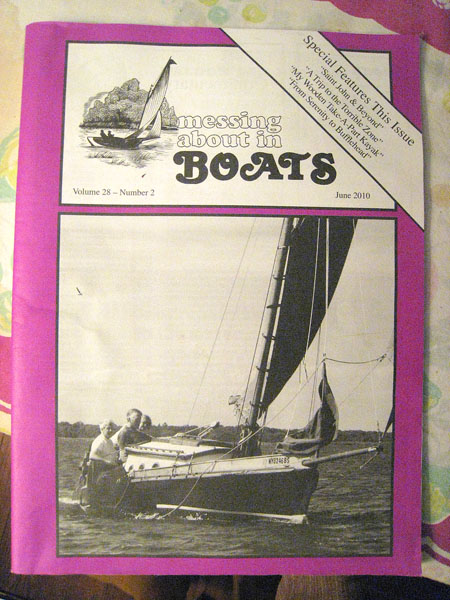Reggae Perennial Gardening
OYB Style
Well it has to be admitted. The OYB lifestyle statement no longer the buff, oaken manly-man thing it once was. No longer obsessing over shaving a few seconds off our race times, we are settling down, getting some gray, going a little soft around the middle, worrying about our property taxes and generally leading a more reflective and contemplative life. For me an inevitable formula seemed to come into play: Getting Older+Homeowership+World-weariness=Need to Grow Plants Must Dig Perennial Beds. Who knows what it’s all about. Maybe I just got annoyed at how many of my precious life hours were going into mowing the damn lawn.
If you haven’t already, just once in your life you need to get yourself on the White Flower Farm mailing list. If you have even the tiniest scrap of interest in plantlife or flowers, it’s pretty entertaining to see the subject given the total yuppie-porn catalog treatment: ultraglossy photos, outrageous prices and copy describing the plants with a wonderfully snooty, old-money, east-coast tone.
The seductive photos do have their undeniable effect, and pretty soon you are eyeing a barren patch of gravel by your trash cans saying “maybe I could wedge a few Cimicifuga simplex ‘White pearl’ in here somehow ”
OK, stop right there, because if you go down that road you can easily find yourself racking up a $150 charge on your MasterCard, only to find when the box arrives that it is NOT filled with a glorious garden of flowers, but rather with a fairly nondescript pile of roots,which don’t look like much of anything. And if you just stuff em into the ground without some thought, they’ll can just croak on you. Let’s look at the OYB Way of spiffing up your spread, without spending a squillion dollars on some overpriced, overmarketed Product.
I am now going to reveal to you the most beautiful word in the English language: that word is Mulch.
I had never really gardened much before 1993, and was a bit daunted at how to create a flower garden that looked like it had got there on purpose. We started by digging up some lawn, turning the sod upside down to kill the grass, but leaving it in place so it would break down and add humus to the soil. We were lucky that our dirt was pretty loose and rich to begin with, but people with clay or sand would want to mix in some compost or manure at this point. Our city’s Solid Waste Department makes great compost (from the fall leaf cleanup), and it’s incredibly cheap too-check if your town does something similar.
We called an guy we knew who runs a tree service, and asked him if we could get a load of wood chips from their big tree chipper. Ordinarily they just have to dump this someplace, so often you can get chips for free. (It turned out that the City also sells shredded christmas trees for $7 a pickup-load.) Anyway the tree docs came by one afternoon and emptied their truck, giving us a HUGE pile of chips for mulching everywhere we could think of.
Well the original idea of mulching is that it keeps you from having to pull weeds all the time from between your plants; and it holds moisture in the ground so you don’t have to use hundreds of gallons of water on everything. This is all well and good, but what really amazed us was that once you have this tidy bed of wood chips spread around, suddenly it looks like a real garden! You get some little green fellas poking up out of this background of mulch-I mean, it almost doesn’t matter what the plant is, it just looks nifty and intentional! Which lead us to thinking
Free Plants
We realized that there were actually a lot of pretty cool plants growing back in the overgrown part of the back yard, but you couldn’t really see them in all the tangle. They were struggling a bit in the shade too. But that started our experiment with free plants: We’d dig up some nice Waterleaf or Fern or wild phlox or daylily or whatever (taking a big ball of dirt around the roots), and by putting it on display in the mulched bed it suddenly became an official garden plant!
Don’t go out raiding the rare wildflowers until you know what you’re doing (see Books), but the first plants we moved were mostly just strays from our own urban backyard. You’ll inevitably discover a few plants which become aggressive pests when moved to the garden this way-but just dig them back out again. Hey, it’s a learning experience.
The next source of free plants is other people with perennial gardens. Ask around: usually gardeners have something that expanded a little too enthusiastically, and outgrew it’s space. They’re usually happy to dig up the excess and give it to you. Plants which tend to be “vigorous” growers like these (a gardening euphemism of wonderful understatement) are great for nervous beginners, or when you have a lot of space to fill in.
From Seed
The next way to get plants without spending an arm and a leg is to start things from seed. For some reason, even people who start vegetables from seed usually don’t think to grow perennials this way. But if you think about it, you can get a packet of seeds for 75 cents or $1.50 which will grow dozens of plants. The downside of this method is that the first year the plants will be pretty teeny and probably won’t flower. You also have to deal with growlights, trays, watering, etc. so if you aren’t already set up for it there are additional costs. Still, in our first couple of years, when we were still flailing around killing things, it was a lot easier to lose a seedling or two than some potted plant we paid six dollars for.
Natives on the Cheap
The glossy plant catalogs like WFF and Wayside are a nice way to get a look at different plants and see what appeals to you, but keep in mind that the colors are usually tweaked up a bit, and that the copy is, uh, on the optimistic side to say the least. We’ve gotten a lot more balanced and reliable information (and more good pictures) by buying big perennial books as they get remaindered-plant info doesn’t go out of date!
There is a lot of breathless copy in the catalogs about “exciting new selections” and new european hybrids. But the dirty little secret they don’t mention very often is that every plant started out as a wild plant somewhere. Are the differences between the wild and cultivated versions really worth the $5-10 per plant the catalogs charge?
The glossies’ plants are selected strains that give a good show of flowers, and they’re bred to be uniform from plant to plant, which might be important if you’re growing a mass of something. The wild plants are more variable, maybe smaller, maybe blooming for a slightly shorter period. But does that mean they’re totally worthless? Heck no! The wild versions are great too-and they are sometimes tougher plants than the cultivated varieties (“cultivars”).
If you’re still in the early plant-killing phase of your gardening experience, you need to know that there are other catalogs out there, oriented towards large-scale plantings for landscape restoration work, where you can get many of the great american wildflowers for a lot cheaper than from the glossies. We once ordered a couple of little rootstocks of a wild woodland sunflower (Heliopsis helianthoides); in their first year, they exploded into a 5-foot-tall riot of yellow daisies. Price, $1.25 each. You can get wonderful BlackEyed Susans, Lupines, Coneflowers, Butterfly Weed, Penstemons, on and on, all for absurdly cheap prices.
Paying Real Money
After some point you’ll start to feel you’re getting pretty good at keeping your plants happy. You’ll probably also start to get some ideas about what plant combinations are just not working out so well. And then there will be some perennial in a glossy catalog which seems to be exactly what you need
Well when it comes to buying $5-7 plants, our experiences have been a lot happier buying potted plants locally than by mail-ordering. Most of the time those catalog plants are bare root, and they often get off to a very rocky start (I’ve killed more than one $5 plant). Buying potted plants you can see the leaves and often the flowers, so you’re not just buying a pig in a poke. Around here there are two nurseries within driving range with spectacular selections, better than any catalog; and even the weekly farmer’s market is getting a wider and wider range of perennials-ones we used to see only in the real plant-geek catalogs.
If you do succumb to the lure of mail-order, take it from me: Put your new little roots into a pot first, and grow that in a sheltered place for a month or two. That way your little guy gets to bulk up a bit, before facing the wind, heat, fungi, or whatever out in the garden.



